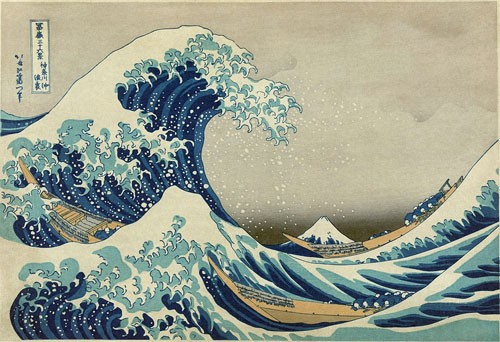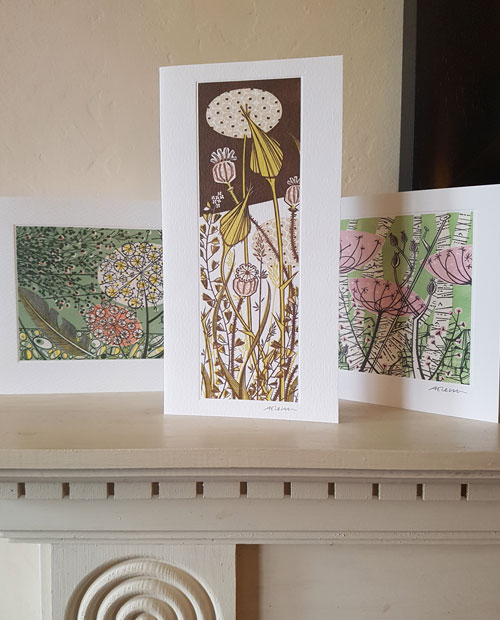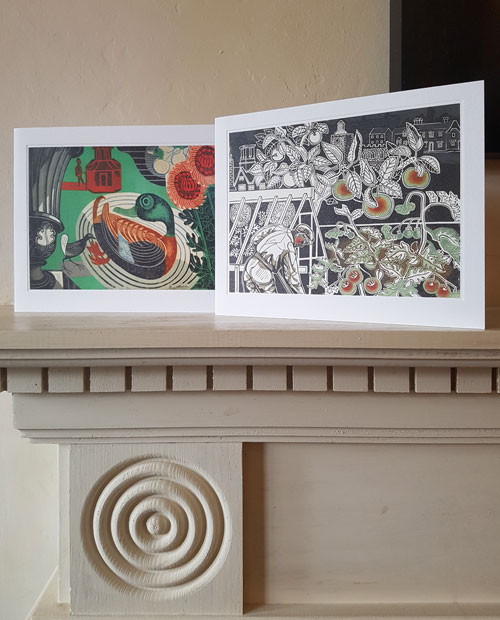What is Lino Printing?
What is Lino Printing? Lino Printing is a form of block printing that involves carving a pattern or design into a linoleum, rubber or vinyl surface that can then be printed from.

'Under the Wave off Kanagawa' or 'The Great Wave' is probably the most famous woodblock print by Katsushika Hokusai
Wood is the more traditional block printing surface but lino gained popularity in the early 20th century as a cheaper alternative and has become not only a common surface for professional printmakers, but a great introduction to printmaking for kids.
The recesses carved out leave the design in relief and it is the raised design that the ink is applied to and then transferred to the paper when pressure is applied by hand or printing press.
Multiple colour prints can be achieved by either carving the design on several blocks – a block for each area that will be a different colour - or by the reductive technique where just the areas that will have no colour are cut away first and the remaining area is printed with a pale colour. Then, on the same block, more sections are cut away for an area of another colour. The block is progressively cut away and the colours used get progressively darker. As the block is destroyed in the process, there are a fixed maximum number of prints that can be created from it.
What equipment is required for Lino Printing? There are a number of items required such as cutters, brayers, barens, paper and ink as well as the lino itself. For a full description and explanation of the equipment required, check out our ‘What do I need to make Lino Prints?’ page.

Lino Prints by Angie Lewin
Which Artists have used Block Printing? The Japanese have long been associated with wood block printing with Artists such as Hokusai (1760 – 1849) achieving much acclaim during his lifetime and remaining much admired to this day. Modern wood block printers include Angie Lewin who produces very popular images of British flora on everything from stationery to fabrics.
Lino was used as an alternative to wood by Artists such as Matisse and Picasso from the 1900s and became a popular process within the German Expressionist and Russian Constructivist movements of the 1910s and 1920s. The first British exhibition to feature Lino Prints was in 1929 where cubist and futurist styles were set off by the bold contrast achieved by lino printing. Major players in this period were Sybil Andrews, Claude Flight and Cyril Power.

Sybil Andrews produced Lino Prints that were very much in the Futurist style.

Edward Bawden is well known for his designs for book covers and book illustrations, posters, prints and wallpapers - a lot of which were made using Lino Cuts - which he produced between the 1930s and 1960s.

Lino Printed images remain very popular. Why not check out the work of other modern printers such as Nick Wroblewski, Paul Catherall and Hannah Firmin?
